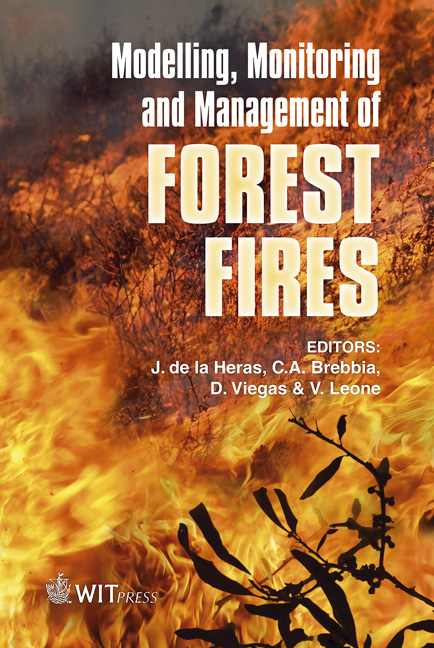Characterizing And Modelling The Spatial Patterns Of Wildfire Ignitions In Portugal: Fire Initiation And Resulting Burned Area
Price
Free (open access)
Transaction
Volume
119
Pages
9
Page Range
213 - 221
Published
2008
Size
489 kb
Paper DOI
10.2495/FIVA080221
Copyright
WIT Press
Author(s)
F. X. Catry, F. C. Rego, F. Moreira & F. Bacao
Abstract
According to the statistics Portugal has the highest density of wildfire ignitions among southern European countries. The ability to predict ignition occurrence constitutes an important tool for managers, helping to improve the effectiveness of fire prevention, detection and fire fighting resources allocation. In this study we used a database with information about 127 490 fire ignitions that occurred in Portugal during a five year period. We performed frequency analysis to characterize the occurrence of wildfire ignitions in relation to both human and environmental variables and compared the spatial patterns of ignitions which originated fires larger or smaller than 500 ha. We also used logistic regression models to predict the relative probability of ignition occurrence, as a function of the resulting fire size. Results show that fire ignitions are strongly related to human presence and activity, and that the spatial patterns of ignitions are different for larger or smaller wildfires. Larger wildfires started in areas with lower population density, more distant from the main roads and at higher elevations, when compared to smaller fires, and also started more frequently in shrublands and forested areas. The results obtained can be useful in decision making for fire danger management. Keywords: fire ignition, spatial patterns, logistic regression, wildfires, GIS, Portugal.
Keywords
fire ignition, spatial patterns, logistic regression, wildfires, GIS, Portugal.





